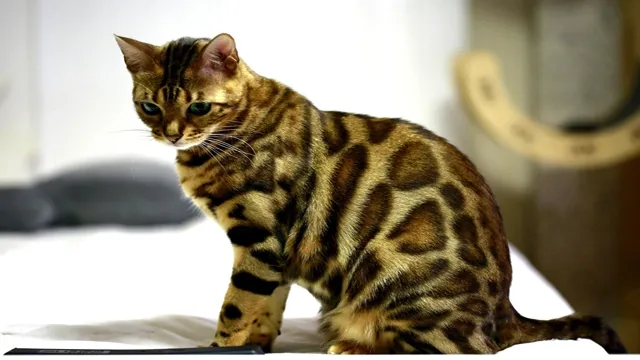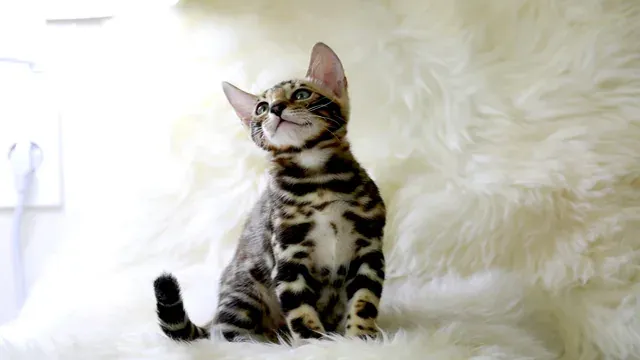The Bengal cat is a domestic cat breed created from hybrids of the spotted Egyptian Mau with the Asian leopard cat (a small wild cat). This cat is a carefully bred hybrid cat that has maintained the beauty of the wild Asian Leopard Cat and the temperament of the domestic cat.
Description
As compared to other wild cats Bengal cats are medium in size, muscular body with robust bones. These cats are larger than the average house cat because of their muscular bodies.
Its back legs are slightly longer than the front legs, the feet are large & oval. The eyes of the Bengal cats are black-rimmed & almond-shaped. The tail is thick, narrowing to a black tip.
The coat is thick, beautifully smooth & soft feels more like a pelt than fur.
There are three different coat colors of the Bengal:
Traditional Tabby colors Bengal cats: Brown Spotted & Brown Marbled.
Sepia Tabby Colours Bengal cats: Seal Sepia Spotted Tabby & Seal Sepia Marbled Tabby.
Mink Colours Bengal cats: Seal Mink Spotted Tabby & Seal Mink Marbled Tabby.
Coat Length: Short
Lifespan of Bengal Cat: Bengal Cat is a generally healthy breed and will live to an average age of 15.
Bengal Cat Size/ Weight Range: This cats normally weigh between 4 – 8 kgs
Bengal Cat Personality
These cats are intelligent, active, energetic cats. These cats love water. They love to climb & can be vocal with a distinctive voice. They easily get along well with other pets & people.
These cats are an energetic breed that needs much exercise and plays. These cats enjoy action and are generally confident and curious.
Bengals cats enjoy high places & are enthusiastic climbers.
Feeding & Grooming
Feeding: Domestic cats require about 80 Kcals of food per kg of body weight per day. Although this is a large cat it must not be obese and a careful watch must be kept on the food.
Grooming: They don’t require much grooming. But If the cat is home alone a lot, it will appreciate another cat to play with.
Health: Regular vet check-ups are crucial to catch any potential health issues early.
Bengal Cat and Allergies
Bengal Cats are often a preferred choice for people with allergies. Their short fur produces fewer allergens, making them a more hypoallergenic option compared to other breeds.
FAQs About Bengal Cats
Bengal Cats are renowned for their distinctive leopard-like spots and playful personalities. Here's everything you need to know:
Are Bengal Cats good with children?
Yes, Bengal Cats are usually great with children. Their playful and social nature makes them wonderful companions for kids.
Do Bengal Cats require a lot of exercise?
Yes, they do. Regular exercise is essential to keep them happy. Interactive toys and playtime are a must.
Are Bengal Cats vocal?
Bengal Cats are known to be vocal and may "talk" to their owners with soft chirps and meows.
Do Bengal Cats shed a lot?
Bengal Cats shed, but their short coat makes grooming relatively easy. Regular brushing can help control shedding.
Can Bengal Cats be left alone for long periods?
Bengal Cats are social and thrive on human interaction. It's best not to leave them alone for extended periods.
Are Bengal Cats prone to any health issues?
While they are generally healthy, Bengal Cats can be prone to certain genetic health issues. Regular vet check-ups are essential.
Conclusion
In conclusion, Bengal Cats are captivating, unique companions that bring the beauty of the wild into your home. Their playful nature, distinctive appearance, and loving personalities make them a fantastic choice for cat enthusiasts. However, it's essential to remember that they require dedicated care, love, and attention. If you're ready to embark on a rewarding journey with a Bengal Cat, you're in for an incredible experience.



